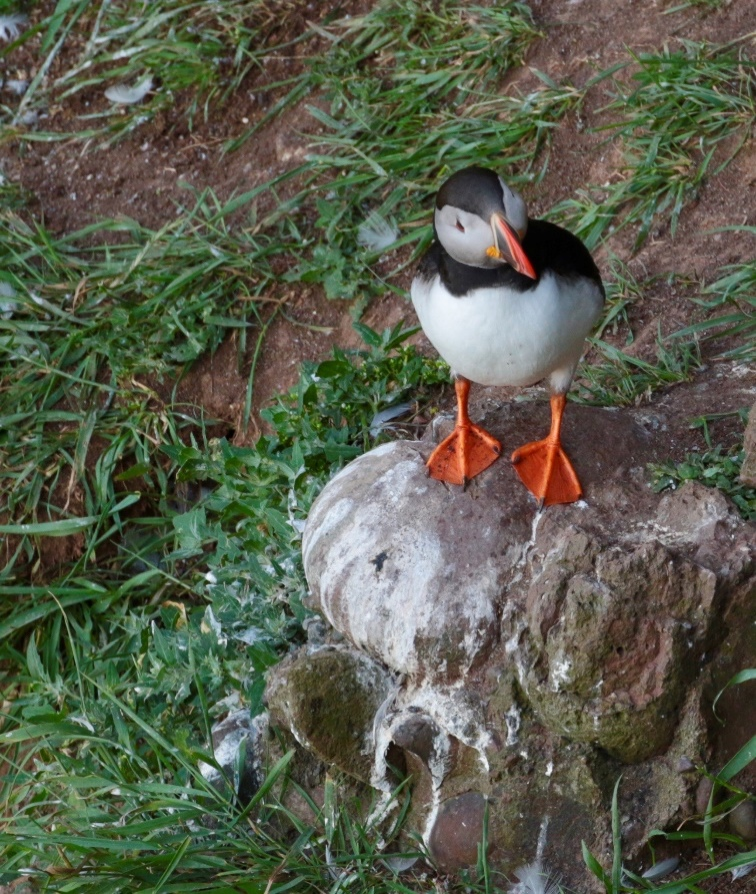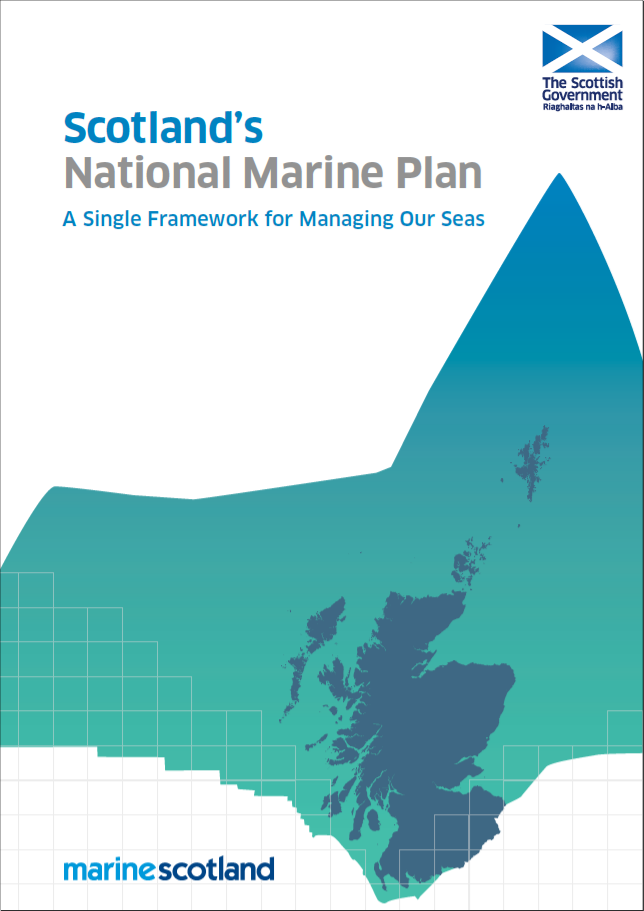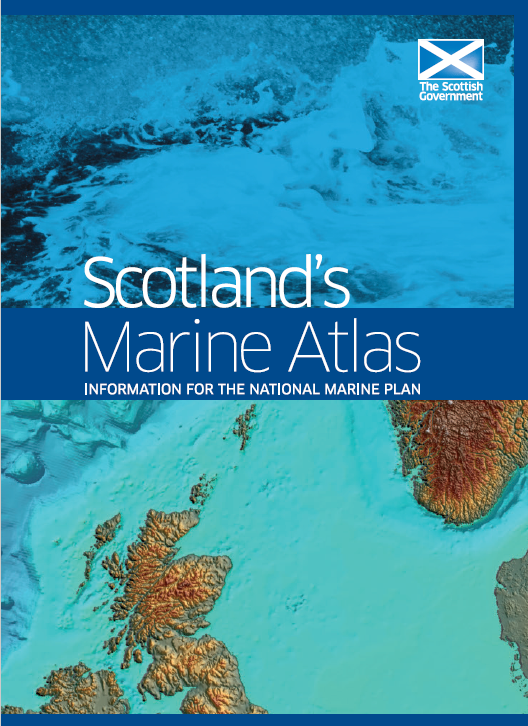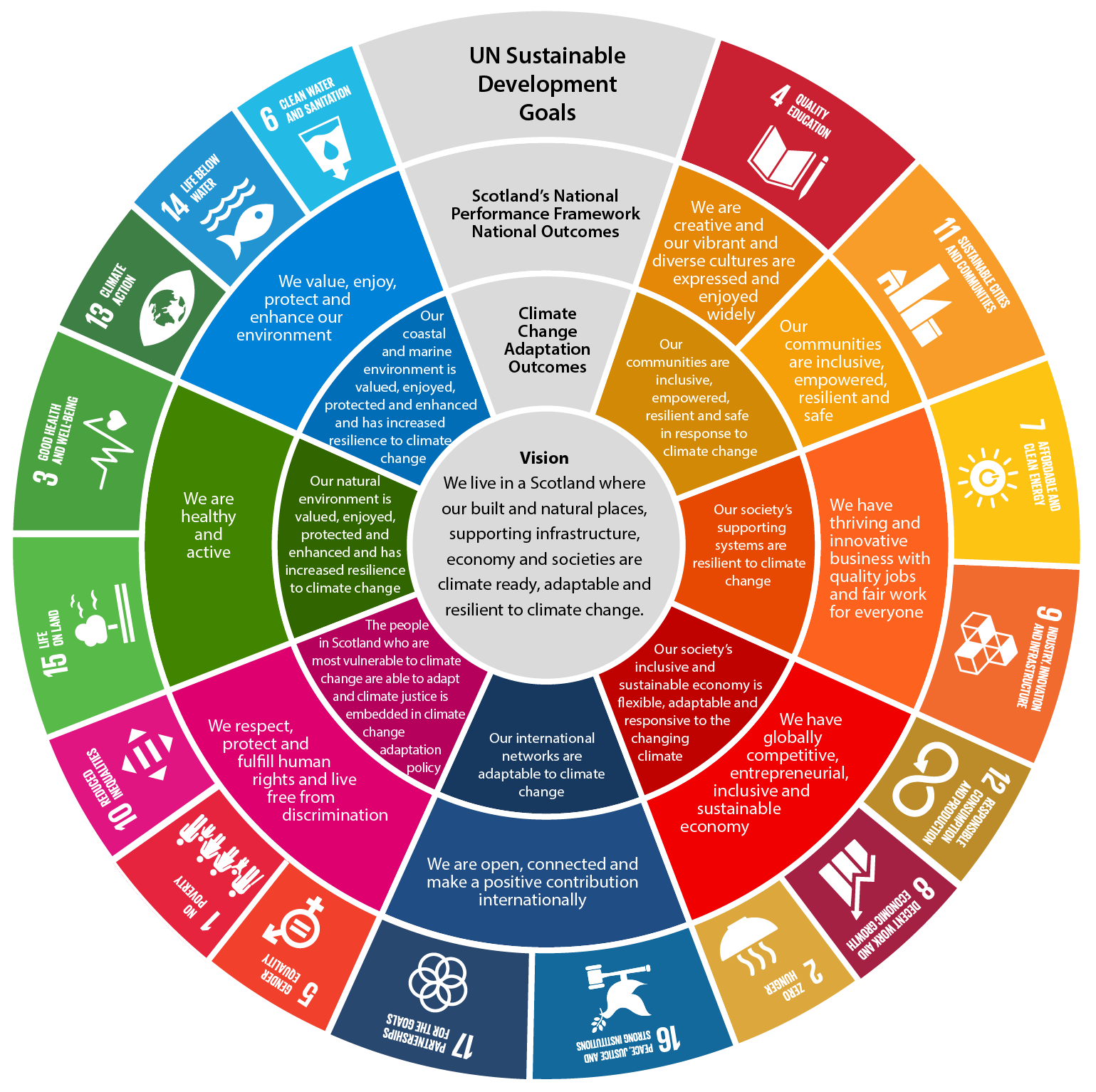The Assessment and Scotland's National Marine Plan
The statutory basis for Scotland’s Marine Assessment 2020
Scotland’s first National Marine Plan, which covers the management of both Scottish inshore waters (out to 12 nautical miles) and offshore waters (12 nautical miles to the EEZ limit), was published March 2015. The Plan “provides a comprehensive overarching framework for all marine activity in our waters. It will enable sustainable development and use of our marine area in a way which will protect and enhance the marine environment whilst promoting both existing and emerging industries”. As required by Part 3, Section 5(4) of the Marine (Scotland) Act 2010,
‘For the purpose of preparing a national marine plan or (as the case may be) a regional plan, the Scottish Ministers must:
- set—
- economic, social and marine ecosystem objectives,
- objectives relating to the mitigation of, and adaptation to, climate change,
- prepare an assessment of the condition of the Scottish marine area or, as the case may be, Scottish marine region at the time of the plan’s preparation, and
- prepare a summary of significant pressures and the impact of human activity on the area or region.
Scottish Marine Regions (SMRs; see Assessment processes and methods) were designated in 2013 and there are 11 within inshore waters (the territorial seas). Once directed by Ministers, a Marine Planning Partnership (MPP) will develop a regional marine plan based on a regional assessment which will sit under the National Marine Plan.
The basic legislative requirements for a regional plan include:
- Assessing the condition of the region.
- Summarising the significant pressures and impact of human activity.
- Keeping under review the physical, environmental, social, cultural and economic characteristics of the region; the purposes for which it is used; its communication, energy and transport systems; and the living resources which it supports.
- Setting economic, social, marine ecosystem and climate change objectives.
- Stating the contribution of Marine Protected Areas (MPAs) and other designated areas to the protection and enhancement of the region.
- Stating policies for sustainable development of the region.
- Developing a Statement of Public Participation and carrying out consultation.
The supporting assessment for the first National Marine Plan was Scotland’s Marine Atlas, published in 2011. The current Plan must be reviewed by March 2021. This requires that an assessment is prepared of the condition of the Scottish marine area. To achieve this, the Scottish Government established the Scottish Seas Data and Assessment Group (SSDAG) which includes representatives from the Scottish Government (Marine Scotland), NatureScot, the Scottish Environment Protection Agency (SEPA), and the Joint Nature Conservation Committee (JNCC). The academic community is represented through the Marine Alliance for Science and Technology for Scotland (MASTS).
SSDAG put in place a separate process drawing on the expertise in the MASTS community for the preparation of the summary of significant pressures and the impacts of human activity. This is detailed under the Pressures from activities section.
Scotland’s National Performance Framework and the United Nations Sustainable Development Goals
Another development since the last assessment in 2011 has been the establishment of the United Nations Sustainable Development Goals (UN SDGs). The 17 SDGs are a plan to promote prosperity while protecting the planet. The interconnected goals have been designed to address the global challenges faced by people today. These include poverty, inequality, climate change, environmental degradation, peace and justice. There is a recognition that the ending of global poverty must be done concurrently with the implementation of strategies to build economic growth while ensuring that needs of education, health and social protection are met and that climate change and environmental degradation are tackled. In the context of marine, SDG 14 (Life below water) is particularly pertinent to the assessments in SMA2020. However, as is increasingly recognised, the ocean delivers many services to humans and contributes significantly to life on land as well as the social and economic wellbeing of society. This means that a clean and healthy ocean contributes to the delivery of many of the SDGs.
The Scottish Government has outlined its purpose in Scotland’s National Performance Framework. The purpose of the Framework is to:
- create a more successful country
- give opportunities to all people living in Scotland
- increase the wellbeing of people living in Scotland
- create sustainable and inclusive growth
- reduce inequalities and give equal importance to economic, environmental and social progress
The National Outcomes detail the type of Scotland the Framework aims to create. Progress with delivery of the National Outcomes will be measured through 81 National Indicators. These are updated on an annual basis.
There is considerable synergy between the UN SDGs and the National Outcomes. Both processes are about giving opportunities to people and to increase the wellbeing of individuals as well as creating sustainable and inclusive growth. At the same time, there is an objective of reducing inequalities and giving equal importance to economic, environmental and social progress. The National Outcomes for Scotland (summarised in the cog diagram) can be mapped onto the UN Sustainable Development Goals. Through SDG Network Scotland there is an on-going process of national involvement and consultation. Progress in Scotland is measured through 81 National Indicators which are updated on an annual basis.
Throughout this assessment there will be links made to the SDGs. The various SDG icons will appear to show where elements of the assessment contribute to particular SDGs.
The interrelationship between the United Nations Sustainable Development Goals and Scotland’s National Performance Framework National Outcomes and Scotland’s Climate Change Adaptation Outcomes. The National Outcome ‘We value, enjoy, protect and enhance our environment’ maps onto SDG 13 (Climate Action), SDG 14 Life Below Water and SDG 6 (Clean water and sanitation).
Delivering today for tomorrow
Scotland’s Marine Assessment 2020 has been prepared to meet the requirements of the Marine (Scotland) Act 2010 and has links through to the UN SDGs and Scotland’s National Performance Framework. The importance of the marine environment to Scotland is now widely recognised as is the considerable interest that many businesses and organisations have in the marine area. Significant infrastructure associated with our ports, harbours and transport network continues to be developed, as exemplified by the Queensferry Crossing. It is also now recognised that there is well-being associated with a visit to the coast, especially if you are fortunate enough to spot the iconic puffin. Today, it is clear that most people have an attachment to the sea.
As an electronic presentation this assessment gives a greater number of people the option to explore and make use of the information presented thereby contributing to delivering Scotland’s vision for “clean, healthy, safe, productive, biologically diverse marine and coastal environments, managed to meet the long-term needs of nature and people”.

The two road bridges over the Firth of Forth. The Queensferry Crossing, which opened to traffic on 30 August 2017, is the longest three-tower, cable-stayed bridge in the world and is the largest to feature cables which cross mid-span. An Act of the Scottish Parliament (Forth Crossing Act 2011) gave the Scottish Ministers power to construct a new bridge over the Firth of Forth and to construct and improve associated roads and structures. © Colin Moffat.

An Atlantic puffin (Fratercula arctica), a member of the auk family, which can be observed on islands around Scotland and at some mainland locations. They can live for 20 years or more. Healthy puffin colonies are seen as a sign of healthy and productive seas. The puffin is protected under the Wildlife and Countryside Act 1981 (as amended) and the EU Birds Directive. © Colin Moffat.




